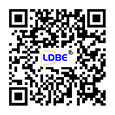Application of Tunable Laser in Optical Communication
Time:2024-03-06
Views:257
The network applications of tunable lasers can be divided into two parts: static applications and dynamic applications.
In static applications, the wavelength of a tunable laser is set during use and does not change with time. The most common static application is as a substitute for source lasers, i.e. in dense wavelength division multiplexing (DWDM) transmission systems, where a tunable laser acts as a backup for multiple fixed-wavelength lasers and flexible-source lasers, reducing the number of line cards required to support all different wavelengths.
In static applications, the main requirements for tunable lasers are price, output power and spectral characteristics, that is to say, linewidth and stability are comparable to the fixed wavelength lasers it replaces. The wider the wavelength range is, the better the performance-price ratio will be, without much faster adjustment speed. At present, the application of DWDM system with precision tunable laser is more and more.
In the future, tunable lasers used as backups will also require fast corresponding speeds. When a dense wavelength division multiplexing channel fails, an adjustable laser can be automatically enabled to resume its operation. To achieve this function, the laser must be tuned and locked at the failed wavelength in 10 milliseconds or less, so as to ensure that the whole recovery time is less than 50 milliseconds required by the synchronous optical network.
In dynamic applications, the wavelength of tunable laser is required to change regularly in order to enhance the flexibility of optical network. Such applications generally require the provision of dynamic wavelengths so that a wavelength can be added or proposed from a network segment to accommodate the required varying capacity.A simple and more flexible ROADMs architecture has been proposed, which is based on the use of both tunable lasers and tunable filters. Tunable lasers can add certain wavelengths to the system, and tunable filters can filter out certain wavelengths from the system. The tunable laser can also solve the problem of wavelength blocking in optical cross-connection. At present, most optical cross-links use optical-electro-optical interface at both ends of the fiber to avoid this problem. If an adjustable laser is used to input OXC at the input end, a certain wavelength can be selected to ensure that the light wave reaches the end point in a clear path.
In static applications, the wavelength of a tunable laser is set during use and does not change with time. The most common static application is as a substitute for source lasers, i.e. in dense wavelength division multiplexing (DWDM) transmission systems, where a tunable laser acts as a backup for multiple fixed-wavelength lasers and flexible-source lasers, reducing the number of line cards required to support all different wavelengths.
In static applications, the main requirements for tunable lasers are price, output power and spectral characteristics, that is to say, linewidth and stability are comparable to the fixed wavelength lasers it replaces. The wider the wavelength range is, the better the performance-price ratio will be, without much faster adjustment speed. At present, the application of DWDM system with precision tunable laser is more and more.
In the future, tunable lasers used as backups will also require fast corresponding speeds. When a dense wavelength division multiplexing channel fails, an adjustable laser can be automatically enabled to resume its operation. To achieve this function, the laser must be tuned and locked at the failed wavelength in 10 milliseconds or less, so as to ensure that the whole recovery time is less than 50 milliseconds required by the synchronous optical network.
In dynamic applications, the wavelength of tunable laser is required to change regularly in order to enhance the flexibility of optical network. Such applications generally require the provision of dynamic wavelengths so that a wavelength can be added or proposed from a network segment to accommodate the required varying capacity.A simple and more flexible ROADMs architecture has been proposed, which is based on the use of both tunable lasers and tunable filters. Tunable lasers can add certain wavelengths to the system, and tunable filters can filter out certain wavelengths from the system. The tunable laser can also solve the problem of wavelength blocking in optical cross-connection. At present, most optical cross-links use optical-electro-optical interface at both ends of the fiber to avoid this problem. If an adjustable laser is used to input OXC at the input end, a certain wavelength can be selected to ensure that the light wave reaches the end point in a clear path.







